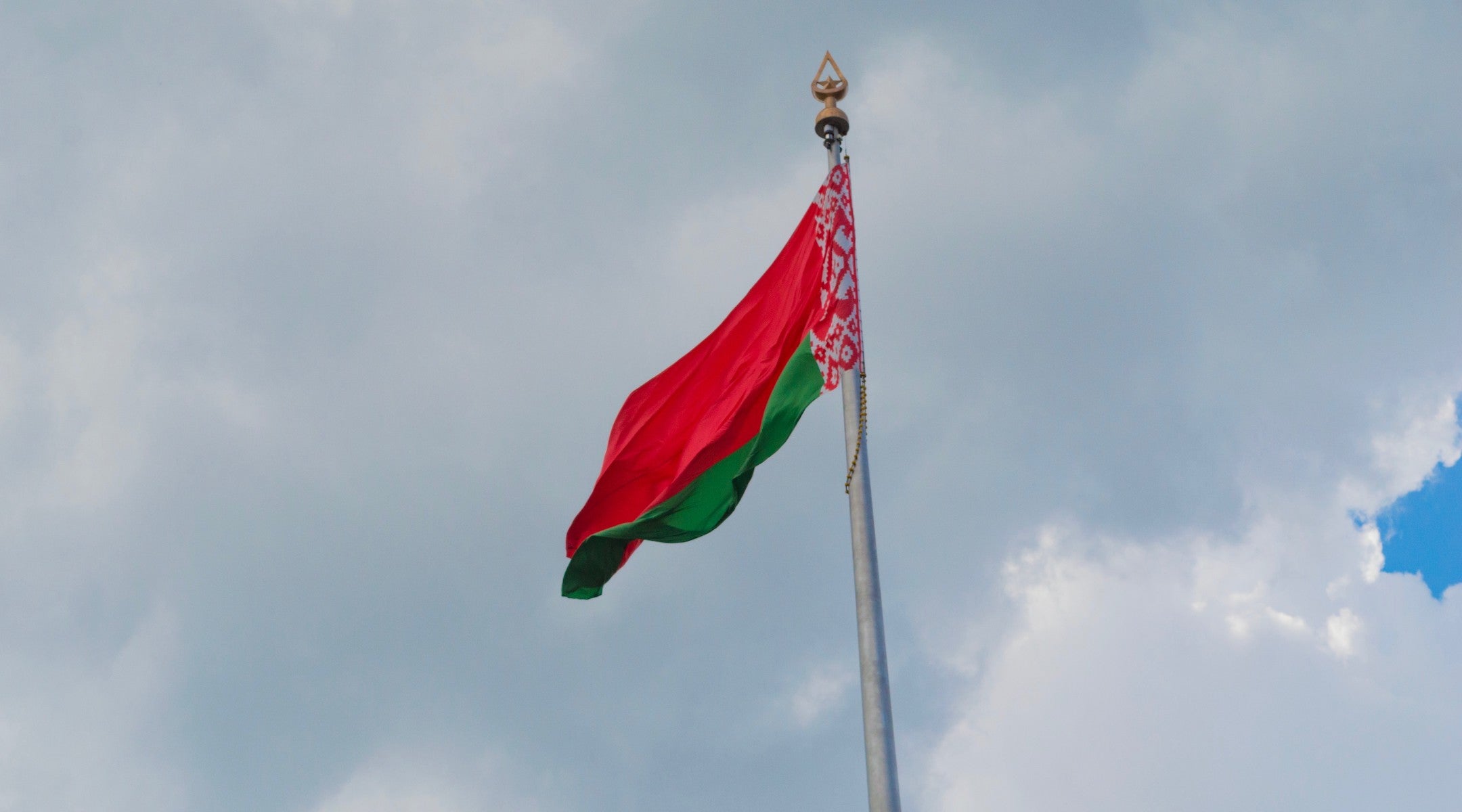The first day of summer camp is much the same around the world. Here in the town of Rakov – a 40-mile drive west of Minsk – 160 children arrive to spend two weeks at the Bnei Akiva summer camp this month.
Nervous smiles and hesitant glances are shared around the huge dining hall tables during the first camp meal. Over soup, thick black bread, and the local version of bug juice – glasses of water half-filled with peaches – the youths, ages 11 to 17, are getting to know each other.
The dining hall, once used by the Communist youth movement, is now covered with Israeli flags and colorful posters of Israel, Jerusalem and the Western Wall.
“Our main aim is to enrich their Jewish identity and prepare them for life in Israel,” says Jeremy Kurnedz, the 30-year-old head of Bneu Akiva in the former Soviet Union.
Young Israeli counselors – girls in long skirts and sandals, boys in jeans and yarmulkes – stand in front of the tables and begin to teach the children songs in Russian and Hebrew. Their enthusiasm and warmth helps calm the first-day jitters.
“Belarus is not an easy population,” says Kurnedz. “The Jews here are further away from Judaism than are the Jews of Ukraine. In Belarus it’s a fight.”
Four tall boys in tank tops sporting Jewish stars and crew cuts have come from the town of Bobruysk. Ruslan, Arturn and two Edwards hope there will be boxing and karate at the camp and have claimed a table in the rear. They agree that they like the camp because there is a lot of dancing and the girls are pretty.
Three boisterous sisters with huge smiles and masses of dark curly hair have traveled from the town of Rogechev in eastern Belarus, where only about 20 Jewish families now live.
Jane, Angela and Svieta pose in front of a painting of three communist youths saluting Lenin that now shares a wall with photos of Israeli folk dancing in Jerusalem.
Across the room, another picture of Lenin has been used as a dartboard.
Many of the children will soon be on their way to Israel with their families.
“There are numerous examples of parents who have made aliyah because of the influence of their children,” says Kurnedz.
Some 300 to 350 Jews make aliyah to Israel each month from Belarus and another 250 or 300 go to the United States, Canada or Germany. The younger people are leaving behind an increasingly elderly population.
“About 1 million Jews were killed during the Holocaust on territory that is now Belarus,” says Lenoid Levin, a prominent Minsk architect who is president of the Belarus Jewish community.
As in other countries formerly under Soviet rule, communism forcibly eradicated much of the Jewish identity and knowledge of the Jews who survived and remained.
But unlike many of the Eastern European Jewish communities, which today have small Jewish populations, a sizeable Jewish community remains in Belarus.
“There are more than 30,000 Jews in Minsk and more than 100,000 in all of Belarus,” says Levin. “Ours is a very big community – the fourth-largest in Europe.”
The Archive of the Jewish Telegraphic Agency includes articles published from 1923 to 2008. Archive stories reflect the journalistic standards and practices of the time they were published.




